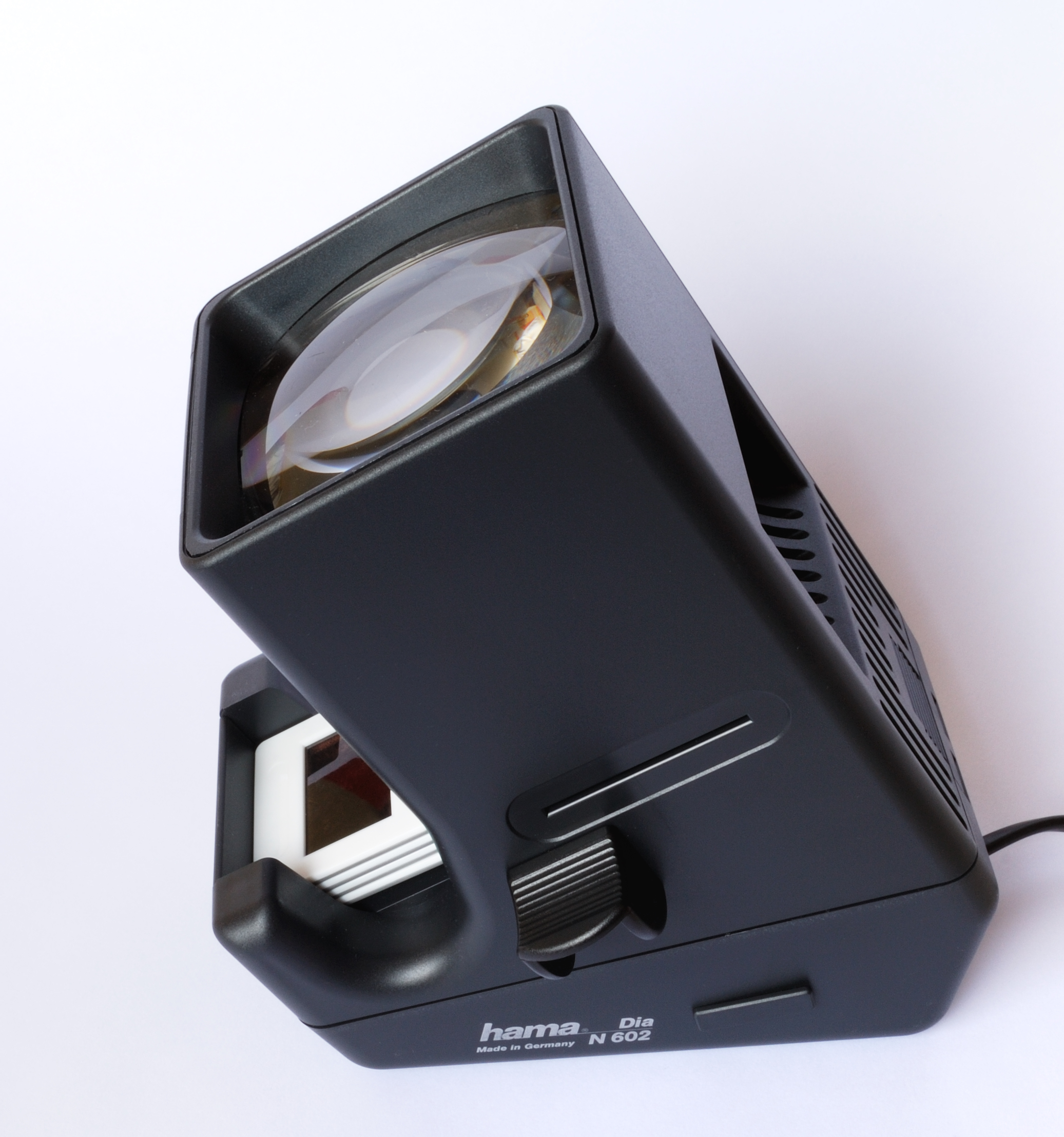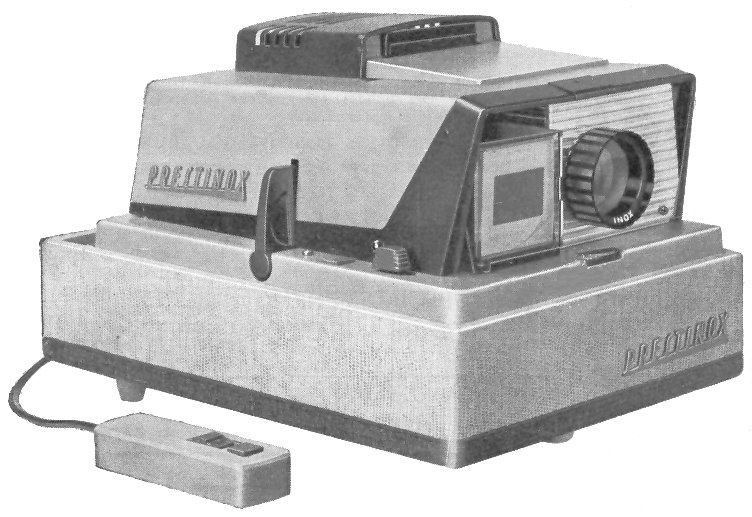|
Slide Viewer
A slide viewer (also called transparency viewer) is a device for looking at film transparencies or similar photographic images. Description A slide viewer is usually a small handheld device with a slot in which a slide can be inserted to see a magnified illuminated view of it. A slide viewer is an instrument for individual viewing. Some models have an automatic feeder for inserting multiple slides and some have a slot for a strip of film. The slide viewer may rely upon natural light or incorporate a light source. Stereo slide viewer The practice of viewing stereoscopic film-based transparencies through a small magnifying viewer dates to at least as early as 1931, when Tru-Vue began to market black-and-white 35 mm filmstrips that were fed through a handheld viewer made of Bakelite. In 1939, a radically different viewer, also designed for use with commercially prepared stereo images, was introduced as the View-Master. Images in color on small pieces of Kodachrome film came moun ... [...More Info...] [...Related Items...] OR: [Wikipedia] [Google] [Baidu] |
Kodachrome
Kodachrome is the brand name for a color reversal film introduced by Eastman Kodak in 1935. It was one of the first successful color materials and was used for both cinematography and still photography. For many years Kodachrome was widely used for professional color photography, especially for images intended for publication in print media. Because of its complex processing requirements, the film was initially exclusively sold process-paid in the United States: customers had to pay Kodak for the cost of development when they bought the film, and independent photography stores were prohibited from developing Kodachrome photos. To develop the film, customers had to mail film to Kodak, who mailed the developed photos back for no additional charge. In 1954, the U.S. Department of Justice found this practice to be an uncompetitive violation of antitrust law. Kodak entered into a consent decree requiring they offer Kodachrome film for sale with and without the development fee, as ... [...More Info...] [...Related Items...] OR: [Wikipedia] [Google] [Baidu] |
Slide Projector
A slide projector is an opto-mechanical device for showing photographic slides. 35 mm slide projectors, direct descendants of the larger-format magic lantern, first came into widespread use during the 1950s as a form of occasional home entertainment; family members and friends would gather to view slide shows. Reversal film was much in use, and supplied slides snapped during vacations and at family events. Slide projectors were also widely used in educational and other institutional settings. Photographic film slides and projectors have mostly been replaced by image files on digital storage media shown on a projection screen by using a video projector or simply displayed on a large-screen video monitor. History A continuous-slide lantern was patented in 1881. It included a dissolving views apparatus.Sloane, T. O'Conor. ''Facts Worth Knowing Selected Mainly from the Scientific American for Household, Workshop, and Farm Embracing Practical and Useful Information fo ... [...More Info...] [...Related Items...] OR: [Wikipedia] [Google] [Baidu] |
Loupe
A loupe ( ) is a simple, small magnification device used to see small details more closely. They generally have higher magnification than a magnifying glass, and are designed to be held or worn close to the eye. A loupe does not have an attached handle, and its focusing lens(es) are contained in an opaque cylinder or cone. On some loupes this cylinder folds into an enclosing housing that protects the lenses when not in use. Optics Three basic types of loupes exist: * Simple lenses, generally used for low-magnification designs because of high optical aberration. * Compound lenses, generally used for higher magnifications to control optical aberration. * Prismatic, multiple lenses with prisms. Uses Loupes are used in many professions where magnification enables precision work to be done with greater efficiency and ease. Examples include surgery, dentistry, ophthalmology, the jewelry trade, gemology, and watchmaking. Loupes are also sometimes used in photography and printing. ... [...More Info...] [...Related Items...] OR: [Wikipedia] [Google] [Baidu] |
Stereoscope
A stereoscope is a device for viewing a stereoscopic pair of separate images, depicting left-eye and right-eye views of the same scene, as a single three-dimensional image. A typical stereoscope provides each eye with a lens that makes the image seen through it appear larger and more distant and usually also shifts its apparent horizontal position, so that for a person with normal binocular depth perception the edges of the two images seemingly fuse into one "stereo window". In current practice, the images are prepared so that the scene appears to be beyond this virtual window, through which objects are sometimes allowed to protrude, but this was not always the custom. A divider or other view-limiting feature is usually provided to prevent each eye from being distracted by also seeing the image intended for the other eye. Most people can, with practice and some effort, view stereoscopic image pairs in 3D without the aid of a stereoscope, but the physiological depth cues result ... [...More Info...] [...Related Items...] OR: [Wikipedia] [Google] [Baidu] |
Stereo Realist
The Stereo Realist is a stereo camera that was manufactured by the David White Company from 1947 to 1971. It was the most popular 35 mm stereo camera ever manufactured ''Amazing 3-D'', pages 32 and 51. and started the era of popular stereo photography of the mid 20th century. History Seton Rochwite was a camera hobbyist who began designing and building his own stereo cameras in 1929. In 1938, he began working on a version suitable for commercial manufacture. The first prototype was ready in 1940. He brought it to the David White Company of Milwaukee who, interested in the design, hired him in 1943. The company began advertising the "Stereo Realist" in photography magazines in 1945, although it was not produced until late 1947. ''Amazing 3-D''. The David White Company had great success marketing the Stereo Realist system to the public. In addition to the stereo cameras there were special slide viewers, projectors, film cutters, slide mounting aids, cases, and other access ... [...More Info...] [...Related Items...] OR: [Wikipedia] [Google] [Baidu] |




.jpg)
